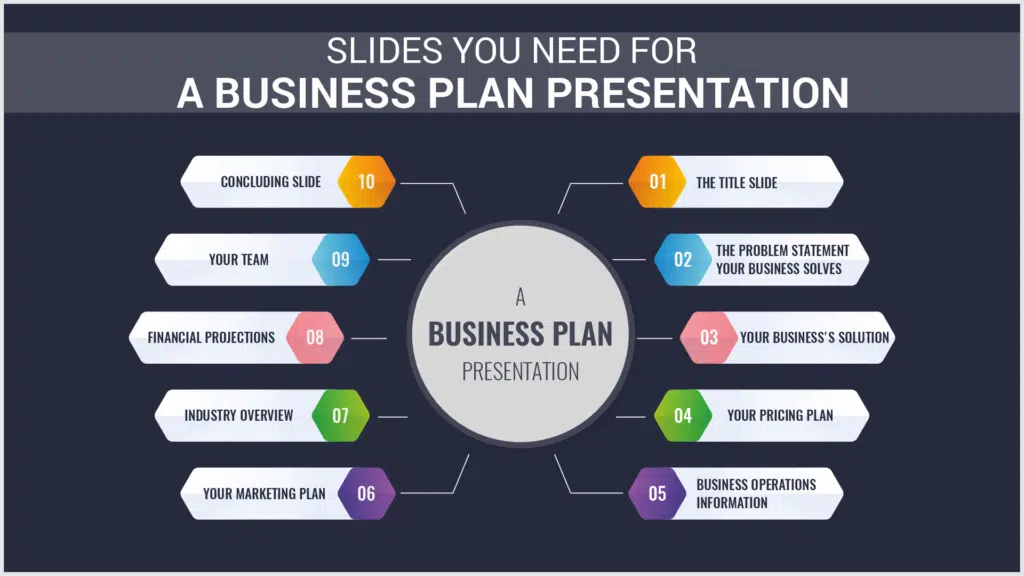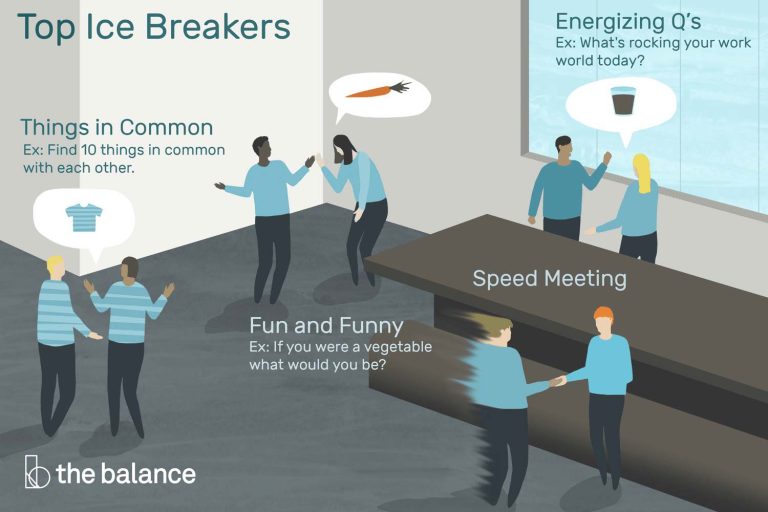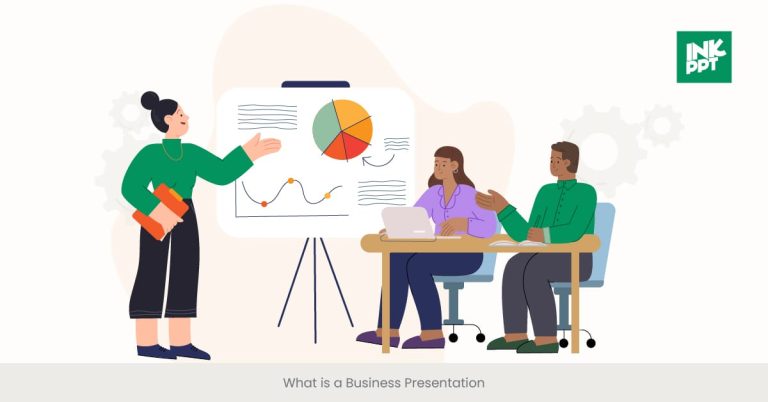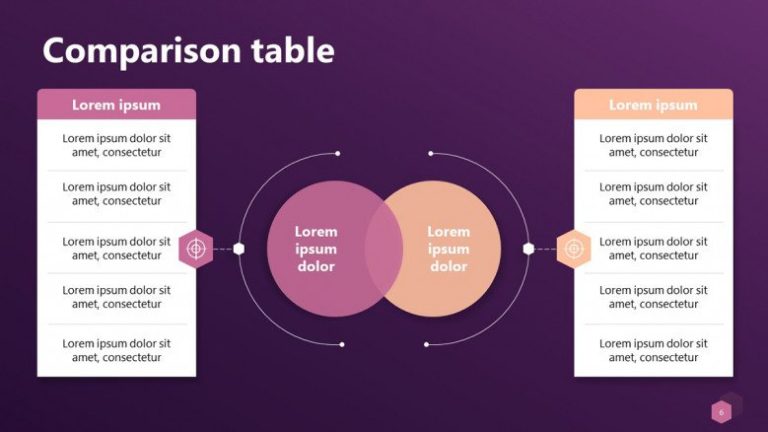What Should Be in a Business Presentation? Key Elements for Success
A business presentation should be clear, concise, and engaging. It must effectively communicate key points to the audience.
Creating a compelling business presentation is an essential skill. Whether you’re pitching to investors, presenting to clients, or updating your team, a well-structured presentation can make a significant impact. But what elements should you include to ensure your message is clear and persuasive?
In this blog post, we will explore the crucial components of a successful business presentation. From capturing attention with a strong opening to using visuals that support your message, we’ll guide you on how to create a presentation that stands out and delivers results.
Clear Objectives
Setting clear goals is key for a good presentation. It helps you stay focused. Your audience should know what you want to achieve. Are you looking to inform, persuade, or entertain? Define this from the start.
Know your target audience. This helps you tailor your content. What do they care about most? Use simple words and short sentences. This makes your message clear. Engage them with relatable stories. Make eye contact. Keep it interactive.
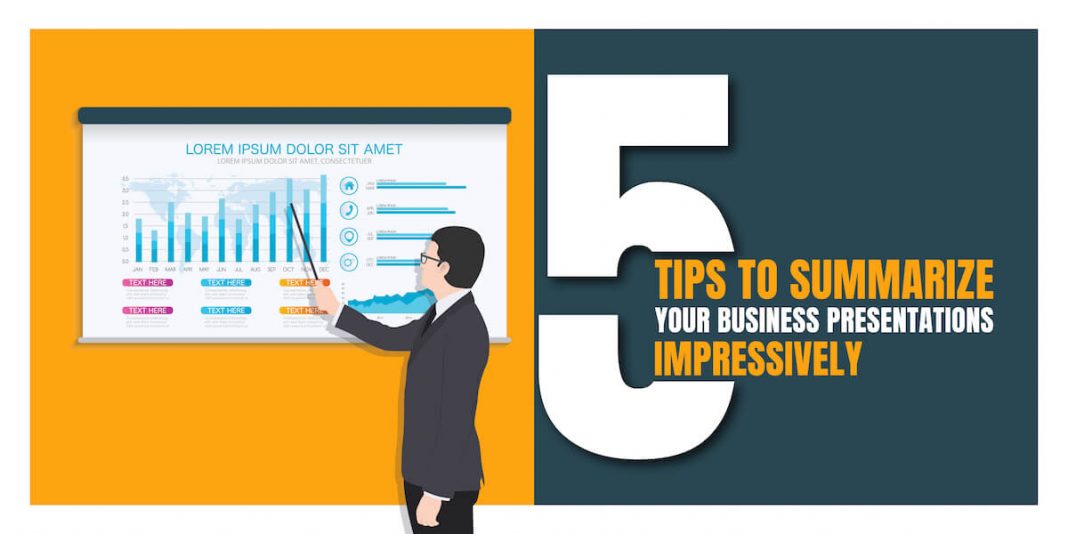
Credit: www.collidu.com
Engaging Content
Stories make your presentation memorable. They help connect with the audience. Use real-life examples. They are easy to relate to. Share a personal experience. This builds trust. Use a clear beginning, middle, and end. Keep it simple.
For example, talk about a problem. Then, explain how you solved it. Show the results. This keeps the audience engaged. Avoid too much data. Focus on the story’s message. Your story should support your main point. Practice your story. Make sure it flows well.
Visual Aids
Slides help keep the audience engaged. Each slide should have one main idea. Keep text short and to the point. Use large fonts for easy reading. Avoid too many bullet points. Too much text can be boring. Include images to make slides interesting. Limit each slide to 2-3 images.
Graphics can make a big difference. Charts and graphs show data clearly. They help people understand numbers. Use colors to highlight key points. Ensure graphics are easy to read. Avoid clutter. Too many graphics can confuse. Simple visuals are the best. They keep the audience focused.
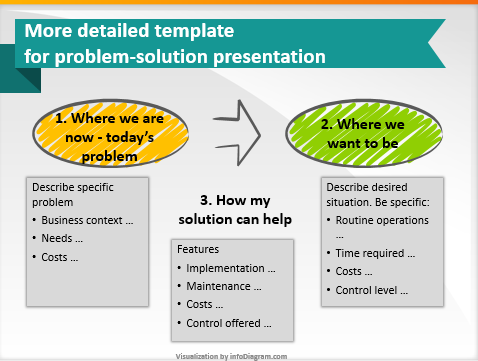
Credit: blog.infodiagram.com
Data And Statistics
Data and statistics make your presentation strong. They show you have done your homework. Use numbers to back up your points. This makes your argument convincing. Always check your facts. Ensure they are accurate and up-to-date.
Charts and graphs make data easy to understand. They turn numbers into pictures. This helps the audience see patterns and trends. Use bar charts for comparisons. Line graphs show changes over time. Pie charts display parts of a whole. Always label your charts clearly.
Strong Opening
A strong opening grabs attention right away. Start with a bold statement or a startling fact. A good story can also hook the audience. Make it relevant to your main points. Keep it short and engaging. Aim to make the audience curious.
After the opening, introduce your main points. List them clearly. This helps the audience know what to expect. Use simple words. Keep sentences short. Each point should be easy to remember. This will make your presentation more effective.
Clear Structure
A business presentation needs a clear structure. It helps the audience follow along. Start with a strong opening. This grabs attention. Next, present your main points. Each point should be clear. Use simple words.
End with a summary. This reinforces your main ideas. Having a logical flow makes your presentation easier to understand. It keeps the audience engaged.
Transitions are crucial. They connect your ideas. Use them between sections. This makes the flow smooth. For example, say “First,” “Next,” or “Finally.” These words guide the audience. They know what to expect.
Good transitions make your presentation feel natural. Practice them. They help you seem confident. Your message will be clearer. The audience will appreciate it.
Effective Conclusion
Summarize key points clearly. Mention main ideas briefly. This helps the audience remember. Use simple words. Avoid jargon. Make sure everyone understands.
A strong conclusion leaves a lasting impression. Repeat important points. Use short sentences. This makes it easier to follow. End with a confident tone.
Call to Action is important. Tell the audience what to do next. Invite them to ask questions. Encourage them to take action. Give them a reason to follow up.
Use clear and direct language. Make it easy for them to respond. This keeps them engaged. Help them feel involved.
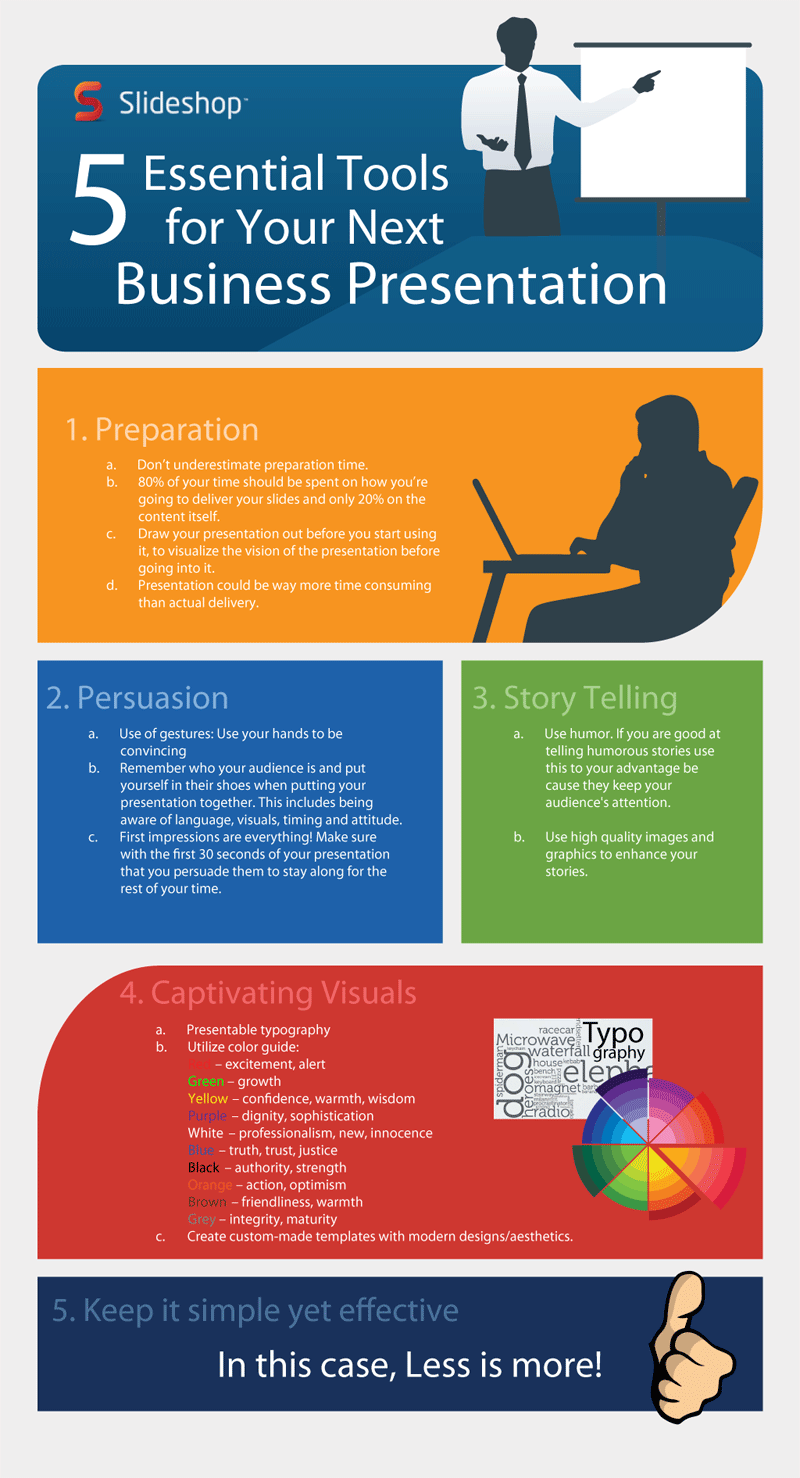
Credit: brandongaille.com
Frequently Asked Questions
What Are The Key Elements Of A Business Presentation?
A business presentation should include an introduction, agenda, main content, visuals, conclusion, and Q&A session. Each section should be clear and concise.
How To Make A Business Presentation Engaging?
Use visuals, tell stories, and interact with your audience. Keep slides simple and avoid overcrowding with text.
What Visuals Should Be Used In A Business Presentation?
Use charts, graphs, images, and videos to illustrate your points. Visuals help in making complex information easier to understand.
How Long Should A Business Presentation Be?
A business presentation should ideally be between 10 to 20 minutes. Keep it concise to maintain the audience’s attention.
Conclusion
Crafting a business presentation requires key elements. Focus on clarity and structure. Highlight your main points clearly. Use visuals to support your message. Engage your audience with relevant stories. Keep slides simple and not too text-heavy. Practice your delivery for confidence.
Remember, a well-prepared presentation leaves a lasting impression. It shows professionalism and dedication. Follow these tips for a successful business presentation.
